 Great Orme variety of the common cowslip pictured here.
The rarest
is
probably the ‘cotoneaster
integerrimus’ which is unique to the Great Orme and grows only in
remote corners of the headland, see also Flora and Fauna and the
Creatures of the Night.
The parkland
occupies over half the total area and much of the rest is enclosed
farmland
mainly stocked with sheep. Sheep also roam on the hillside within the
Country Park.
Great Orme variety of the common cowslip pictured here.
The rarest
is
probably the ‘cotoneaster
integerrimus’ which is unique to the Great Orme and grows only in
remote corners of the headland, see also Flora and Fauna and the
Creatures of the Night.
The parkland
occupies over half the total area and much of the rest is enclosed
farmland
mainly stocked with sheep. Sheep also roam on the hillside within the
Country Park.The Great Orme is the subject of a CADW
Management Plan, under preparation with Conwy County Council in
conjunction
with the Gwynedd Archaeological Trust, which has recently identified
through
aerial photographs, significant remains of mediaeval ridge and furrow
farming
as well as further 19th century copper mining activity.
The Great Orme was the
scene of considerable industrial activity as recently as the 19th
century when
several hundred men were engaged in copper mining. A team of miners
worked for
eight years from 1834 excavating an horizontal adit through solid rock
at Pen
Morfa to reach the base of the deep shaft at Vivian’s copper mine in
order to
release a column of water 198 feet deep and provide an easy route by
which
copper ore could be brought to the shore for sorting and grading prior
to being
shipped to Amlwch and other ports for smelting. The adit still drains
the mines
and, with its continuation ditch, can still be seen at the west shore
near the
model boating pool made on the site of the copper ore sorting pens.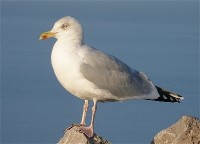
The
Great Orme Exploration
Society (GOES) was set up in
1985 by a
group of people interested in the exploration and interpretation of the
mines
on the Great Orme. A photographic record of their explorations is
presented on
their website. The
Society arranges a number of walks each year in the summer on Thursday
nights,
everyone is welcome. Generally each walk lasts approximately 2 hours
and is of
an easy nature. These copper deposits are particularly rich, and mining
started
in the Bronze Age. The pre-historic workings, claimed to be the oldest
and
finest copper mines in the world, are the subject of very considerable
archaeological activity. Significant sections of the old Bronze Age
mines have
now been excavated and may be visited at the internationally famous Great Orme Copper Mines.
Nearby, at the end of Cromlech Road are the exposed stones of Llety’r
Filiast,
a Neolithic Burial Chamber dated c 3,000 BC. Click for photographs
including ‘Hwylfa’r Ceirw’, an ancient double row of
stones near St. Tudno's and other
archaeological features.
More
photographs and artefacts are at the Llandudno
Museum.
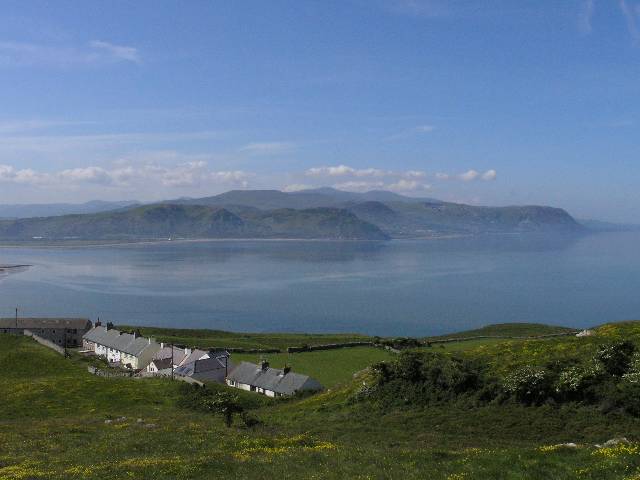
Wonderful views from the Great Orme - this
photo © Christine Jones - June 6th 2006
Visitors to the Great Orme travel in a
remarkable number of ways. Those with time on their hands or youth on
their
side travel on foot and this is quite the best way to reach all parts
of this
wonderful headland. Some even climb the very difficult coastal bits
with ropes
and crampons.
Others engage in cave exploration. Still
others have approached the Great
Orme ‘from the sea’
or as ‘shipwrecks’.
Those who enjoy
Victorian and Edwardian transport systems will travel to the summit by
the Great
Orme Cable
Tramway (one of the three surviving cable operated street tramways
in the
world – the other two are in San Francisco and Lisbon). Others will
travel to the
summit the Alpine way using the modern Aerial Cable Car
built 1969 and operated to the Summit Complex
from a
site in Happy Valley. The Great Orme is also served by a public bus
service to
the Tyn y Coed housing estate and the tramway halfway station.
The Summit Visitor Centre adjoins the
tramway station and the Summit Complex and is well worth a visit. The
Summit
Complex is built on the site of the old ‘Telegraph Inn’, built in 1827
by
the
Trustees of Liverpool Docks as an optical telegraph station to monitor
shipping
on the approach to Liverpool. Also near the summit is the disused
Bishop’s Quarry
with
extensive
fossil deposits.
Travellers by car are also well catered for
by the four-mile Marine
Drive (on which motor coach trips with vintage vehicles – circa
1954-56 –
are regularly operated). The Summit Car
Park has a combined fee with the Marine Drive of only £2.50 per
day
or just £15
for an annual season ticket, which is good for visitors and great value
for
residents. To see a map of the Great
Orme, click MAP.
Long established features of the Marine Drive include the deservedly popular ‘Rest
and
be
Thankful’ café at the halfway point. Perhaps
suitably
refreshed, take the road to the left a hundred yards after the café, which climbs steeply to a
wartime coastal lookout and viewpoint. The first passengers to
travel round the marine drive did so in a horse drawn carriage and near
the highest point on the marine drive is a well called the mare's well
at which the horse could also be refreshed. Click Great Orme Wells for
photograph and details of the other ancient wells. Click Caves and Coast for
more about the coastline.
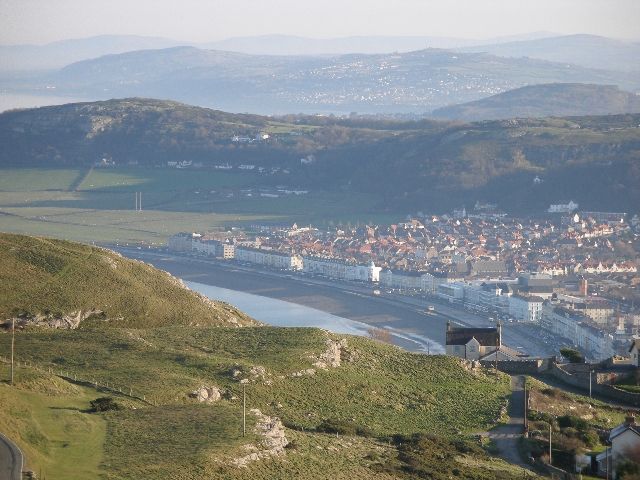
Wonderful views from the Great Orme - this photo © Elwyn
Jones - December 19th 2006
Also
reached from the Marine Drive is Saint Tudno’s
Church. There are several carparks, many ever changing
coastal views and miles of public footpaths by which to explore the
Great Orme.
Below, is the famous GREAT ORME CABLE TRAMWAY and
over forty of the remarkable Kashmiri Goats photographed together near
the halfway tram station.
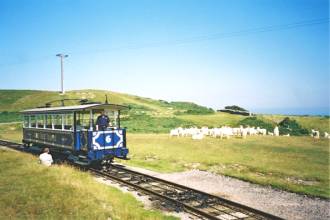 |
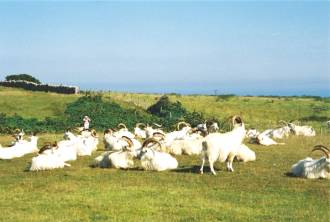 |
More
photographs of the Great Orme are on the Marine Drive, the Great Orme Wells, the Caves and
Coast and the Saint Tudno
pages and also on
the Llandudno Town Trail pages, especially
the following:
8. Pier
Entrance
9. Happy
Valley
12. Haulfre
Gardens
13. The West
Shore
Click for a Map of the Great Orme.